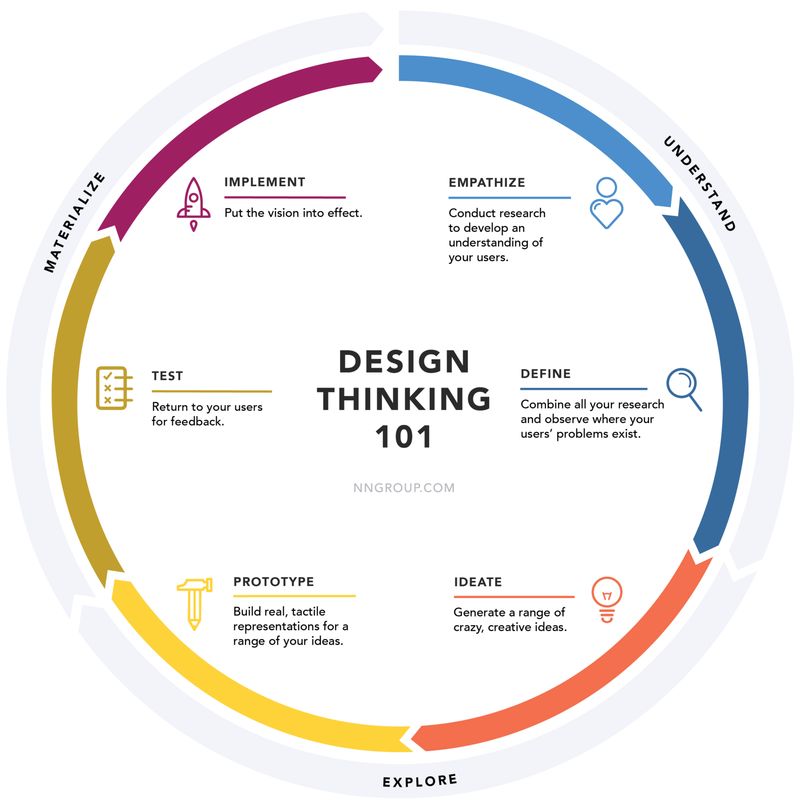There has been an absolute flurry of excitement lately within the industry, with regards to the advent of Design Thinking. From its origins back in the day as a new means of collaboratively extending design to other areas of practice, to the innovation-driven iterative problem solving tool that it is today, design thinking as both a philosophy and method has evolved tremendously.
Design Thinking is rather interesting in itself, as it is the quintessential combination of both creative and critical thinking. Focused on solutions instead of just the problem on hand, design thinking utilises the principles of divergent thinking, which really is about brainstorming ideas with minimal restrictions. In other words, design thinking involves a lot of ideation, collaboration and participation — very much a solutions-oriented approach. It is also known as the ‘human-centered design process’, which starts with the people you’re designing for, and ends with new solutions that are targeted at meeting the needs of these people.
So, why do I think that it is the new core?
It is an undeniable fact that for many companies, as they increase in size and scale, employees start to become more accustomed and comfortable as company processes start to become cast in stone. What follows soon after is a widespread habit of just going through the motions, day in and day out. Ultimately, the particular company starts to experience organisational slack and exhibits signs of inefficiency.
Consider a typical scenario often witnessed behind closed doors in large corporations: members of a steering committee for the latest construction project congregate for the third meeting thus far, but after laborious rounds of discussion, it is clear that nothing much has been accomplished. All talk, little action and absolutely no thinking.
Sounds familiar?
Design Thinking, on the other hand, can allow companies to truly walk the talk, and bring about real change with real benefits. Businesses, both big and small alike, should embrace design thinking and place it at the core of all that they do, giving birth to company cultures that are solutions-focused.
For those doubting the credibility and viability of design thinking, just note that hugely successful brands such as Apple, Google, Samsung and 3M have famously espoused the virtues of applying design thinking to their processes, products and services. I mean, 3M even has a ‘15 Percent Time’ program, which allows employees to use a portion of their paid time to pursue their own ideas — this creates an environment that values trial, improvement and iteration, and helps to decrease the fear of failure amongst employees.
What is shown below is a typical design thinking process, which involves a six-step methodology — from empathising to implementing.

So yes, Design Thinking is indeed revolutionary in its own right, for it represents the future of innovation and creation. However, companies must keep in mind the principles of what constitutes true Design Thinking. I have heard of many companies who are all too ready to jump onto the Design Thinking bandwagon, without actually stopping to first figure out what it truly entails. Design Thinking is not just something you can pick up from a government-subsidised one-day workshop. Design Thinking is not just a process — it is a type of mindset that places strong belief in the value of design in solving real-world problems.
More than just empty hype, Design Thinking is synonymous with the future, and brands need to sit up and recognise that.
comments powered by Disqus